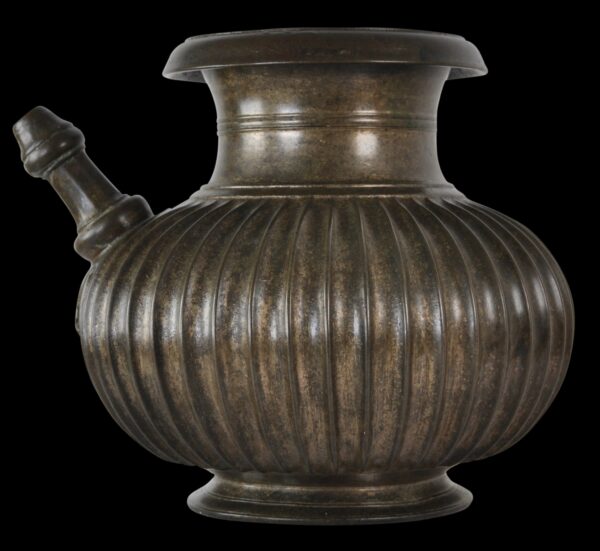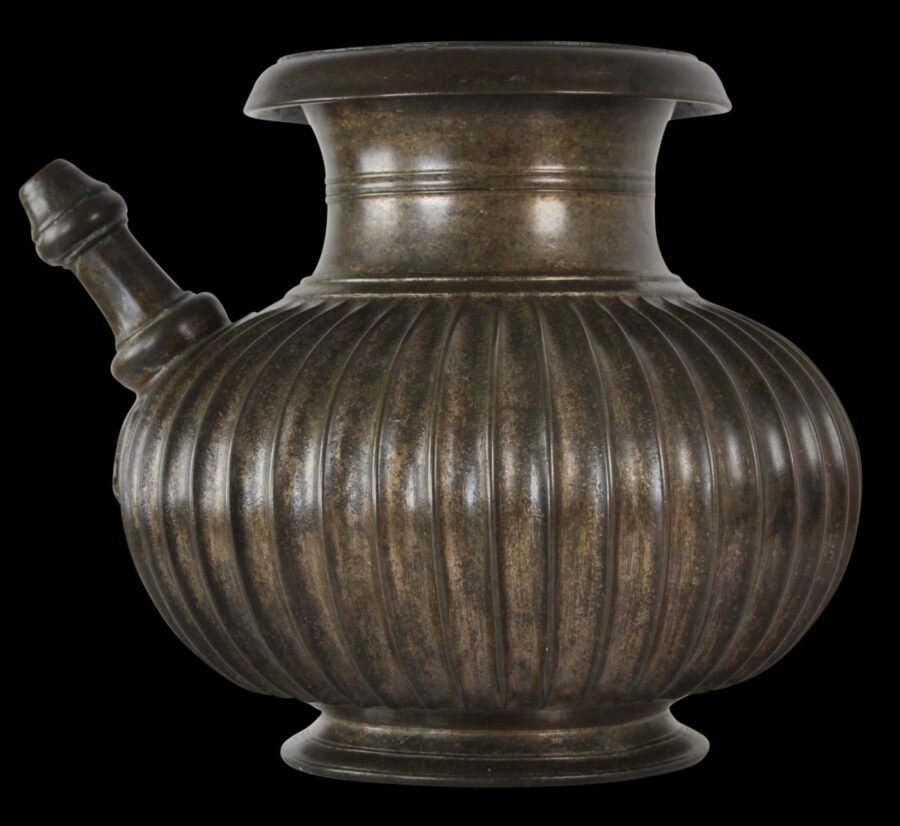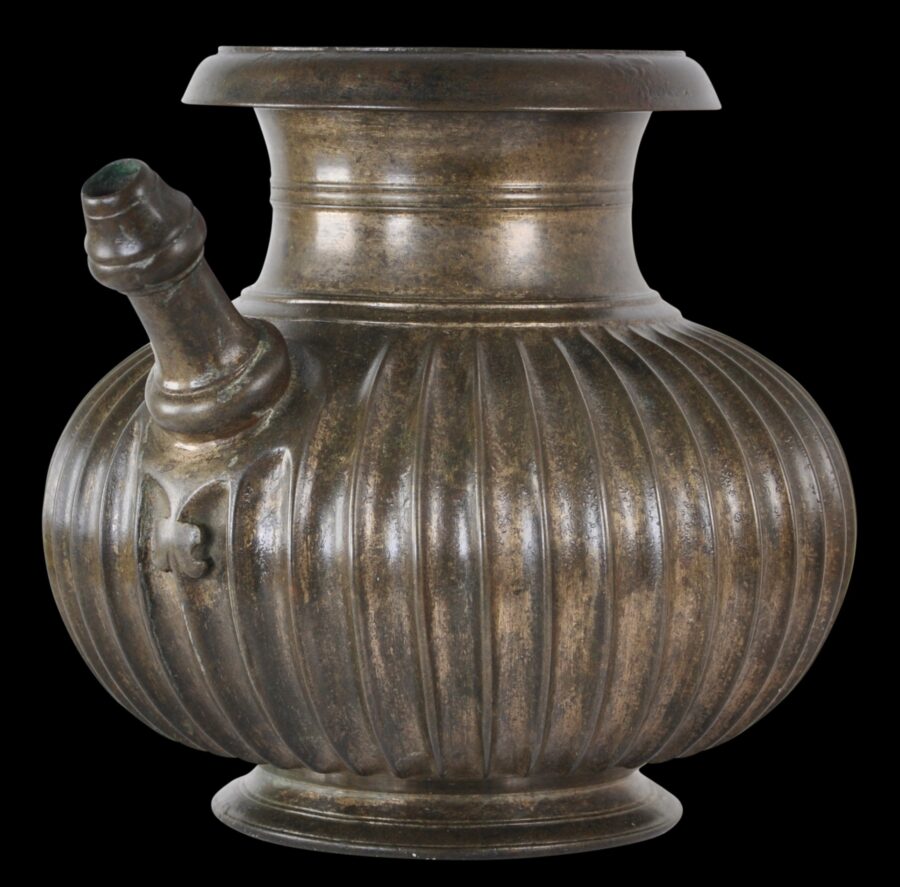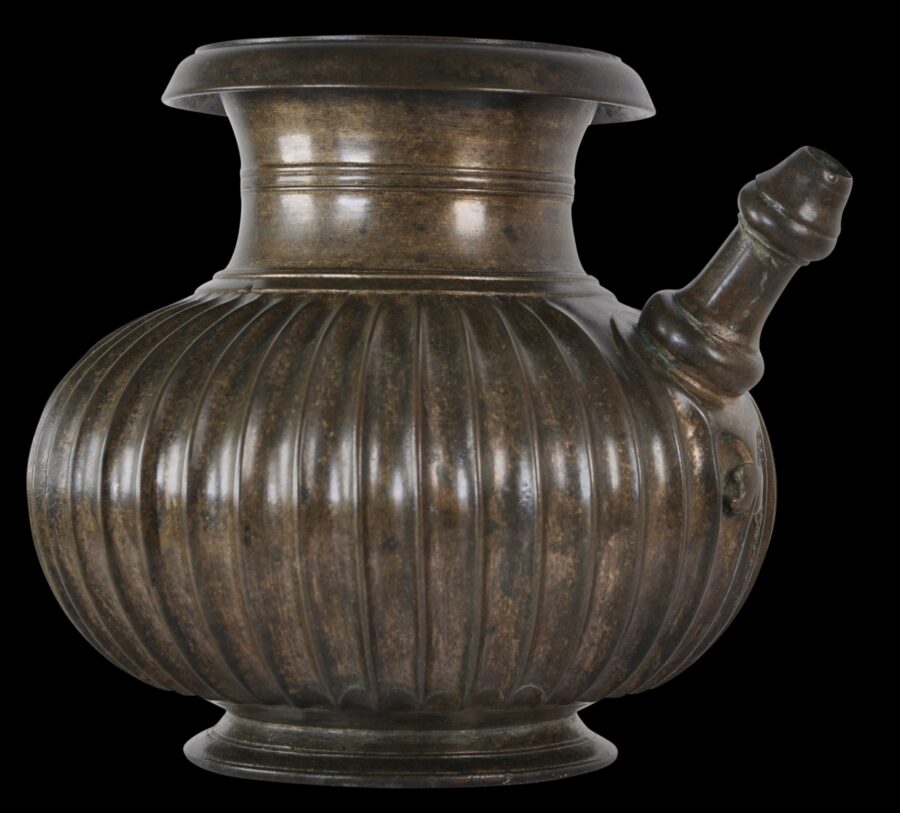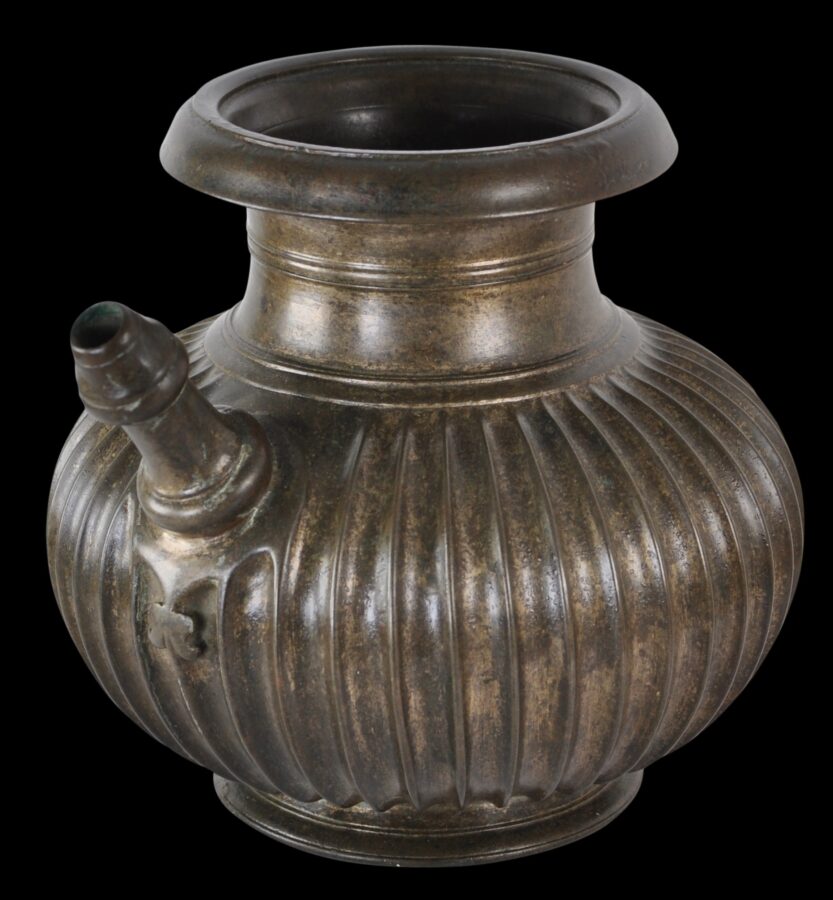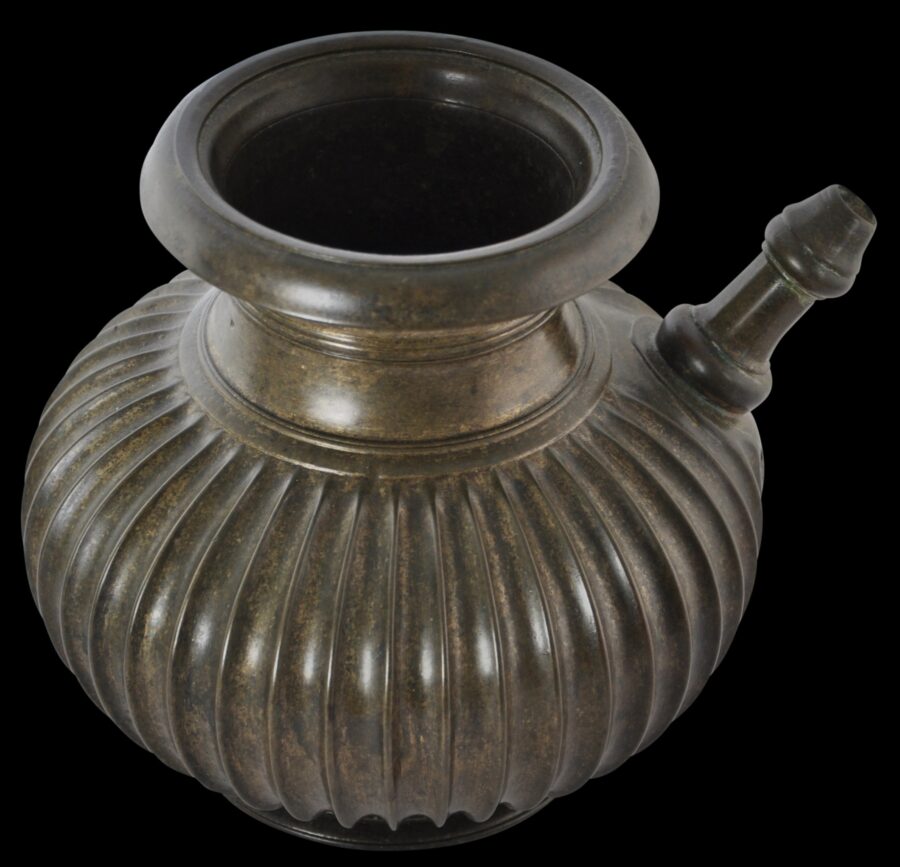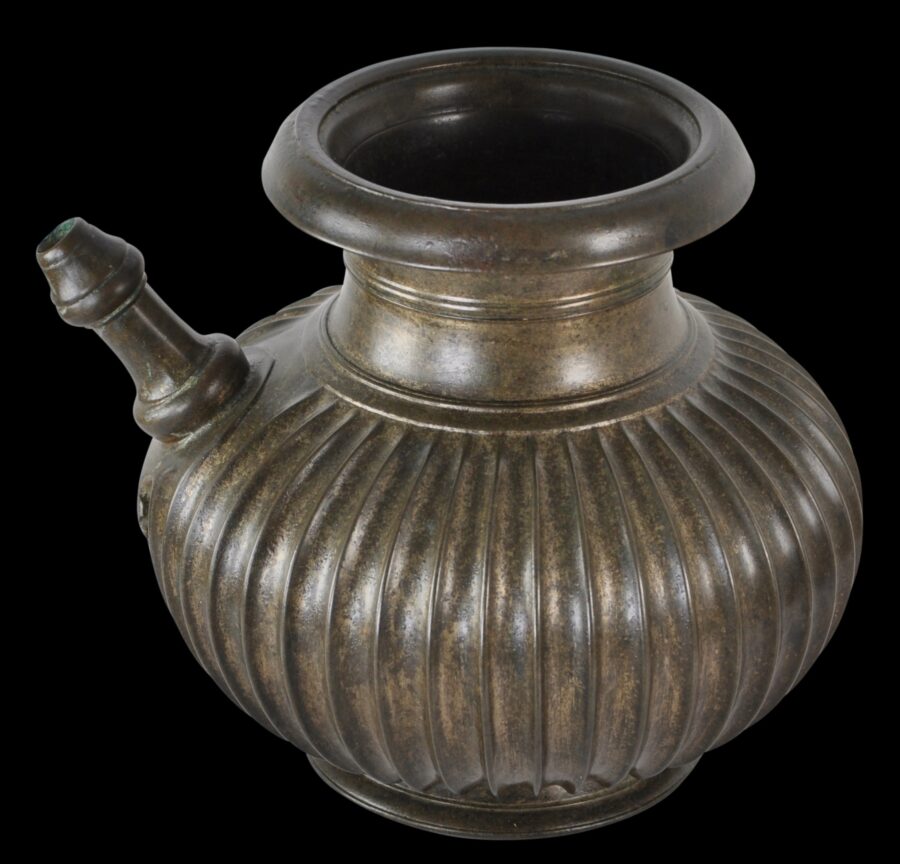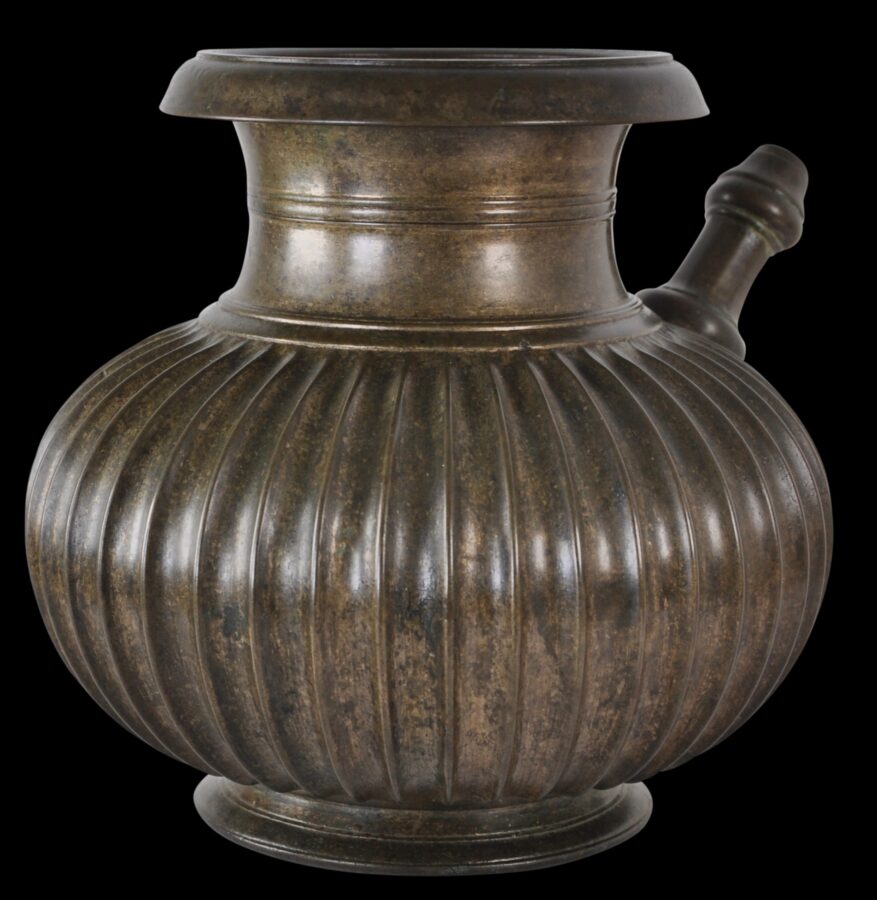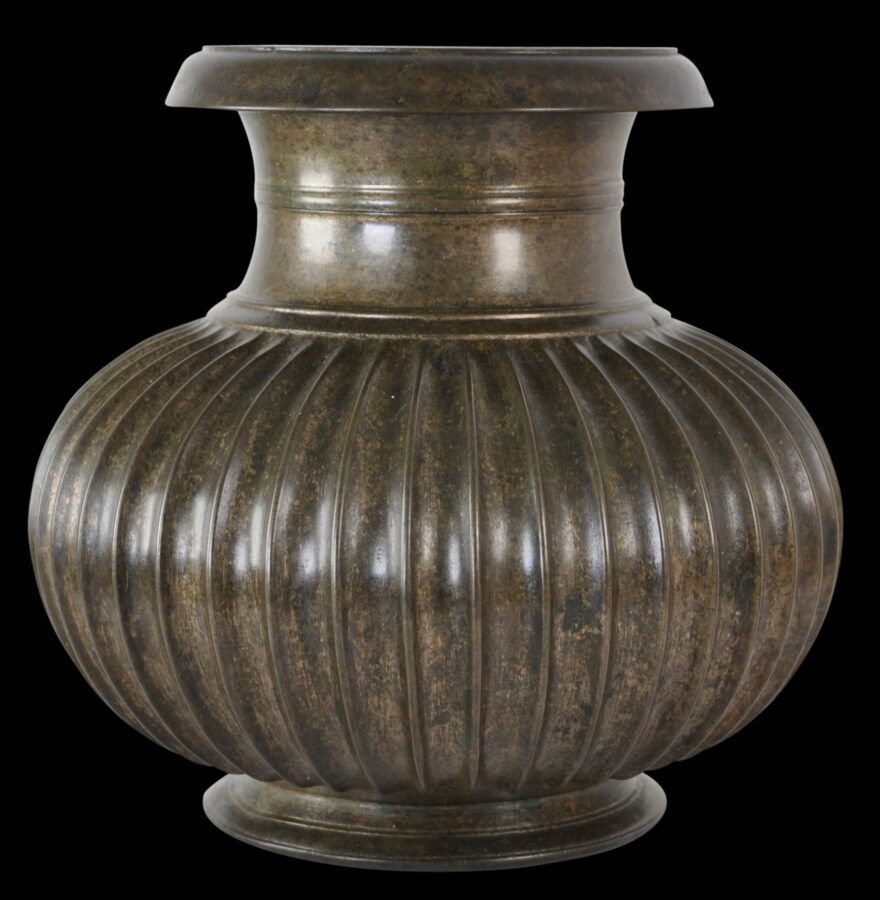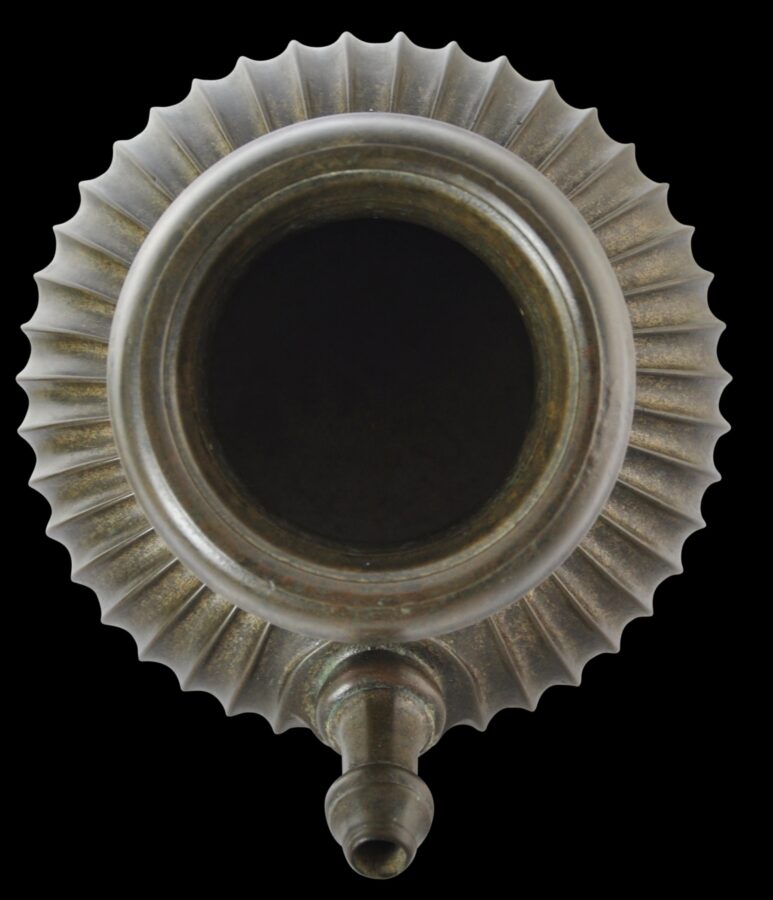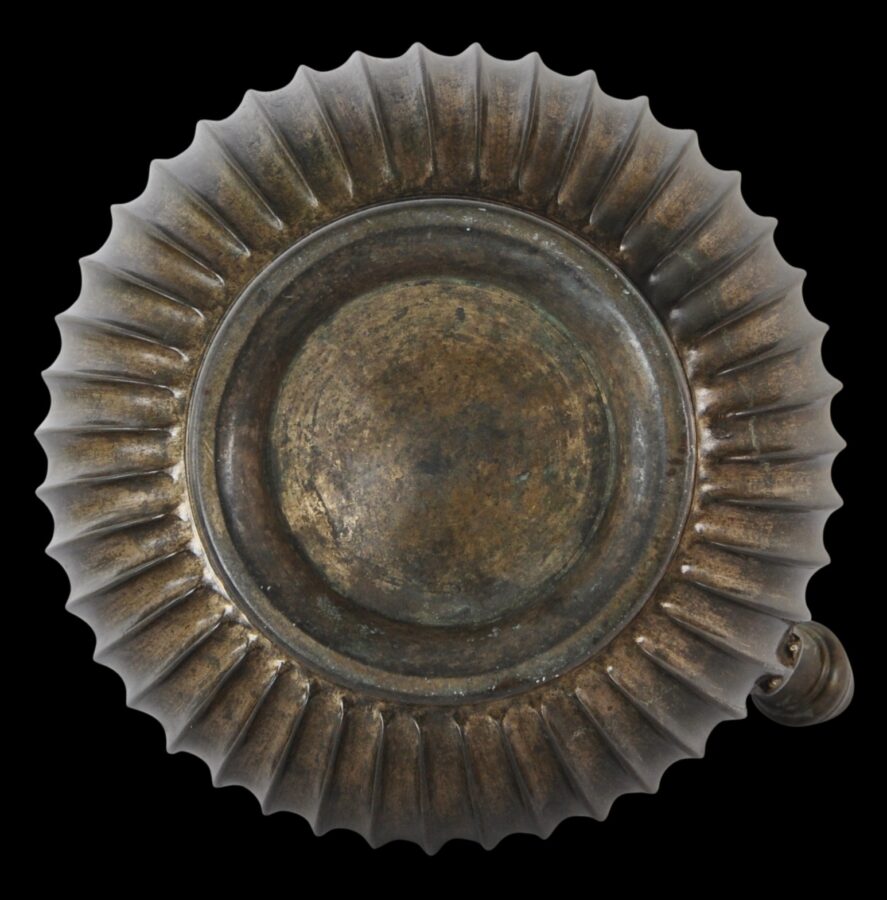This outstanding vessel is a spouted lota or water vase that was used as a drinking vessel. It is of flattened, spherical form, and has been cast in high-tin bronze with beautifully gadrooned sides, an everted lip around the mouth, and a short, baluster-form spout. It sits on a low ring foot.
The rim and neck are incised with concentric circles.
It is one of the best examples of its type that we have seen, published or otherwise. As such it would have been owned by a wealthier household and then only used on special occasions.
Vessels such as these were used to store and then pour drinking water. The user would hold the vessel around its neck and then pour water from the spout into the mouth but without actually making contact with the lips. This example is very much from northern India and Nepal where such vessels are known as karuwa, but spouted vessels of related form later appeared in South India and these were used in Hindu religious ritual.
It was formerly in the Simon Digby collection. Digby (1932-2010) was regarded as the foremost British scholar of pre-Mughal India. He amassed a large collection of scholarly Indian objects over a lifetime of collecting.
The vessel has delightful, varying colouration brought about by the high tin content used in the bronze alloy. Overall, it is a highly sculptural example, in excellent condition.
References
Friedman, M.S., Nepalese Casted Vessels, Decanters & Bowls, Pilgrims Publishing, 2000.
Zebrowski, M., Gold, Silver & Bronze from Mughal India, Alexandria Press, 1997.


